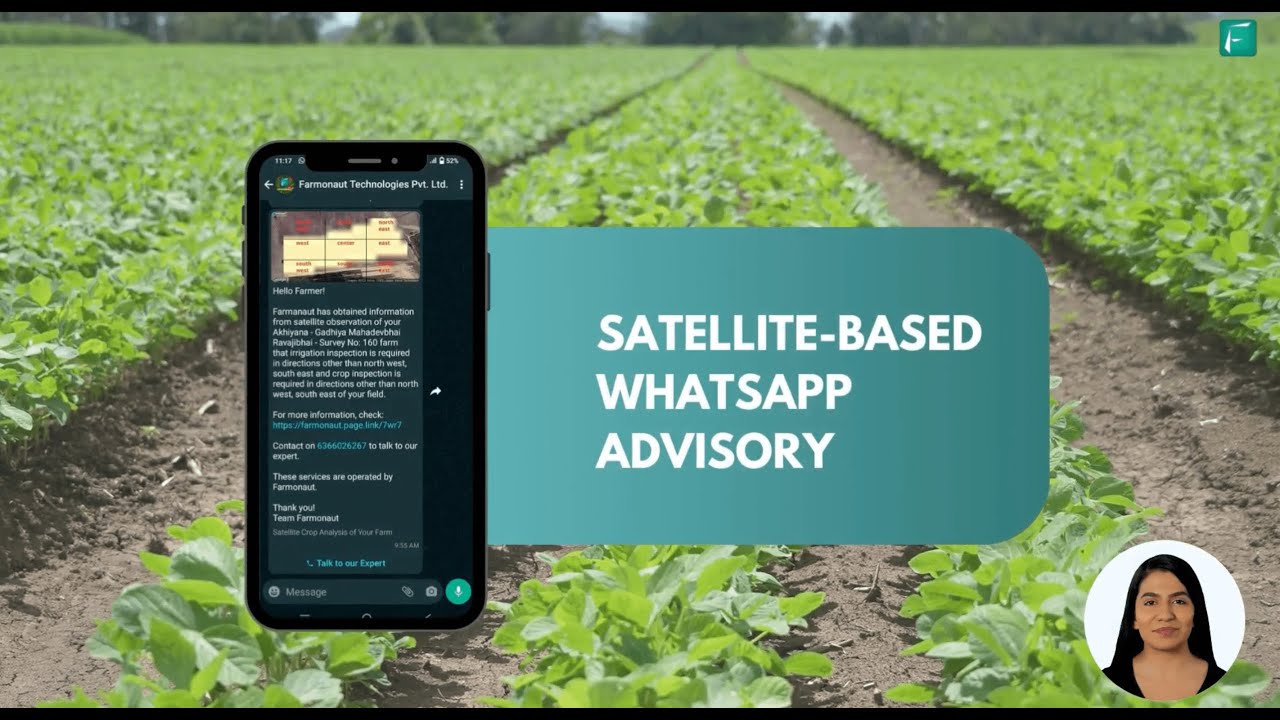Urgent: Texas Panhandle Rural Communities Face Funding Crisis – How Water Conservation and Agricultural Education Programs Are Affected

“A local organization in the Texas Panhandle lost a significant grant, impacting job training and resource management for farmers.”
We are facing a critical moment in the Texas Panhandle as rural communities grapple with a severe funding crisis that threatens vital water conservation and agricultural education programs. The recent cuts in government funding have sent shockwaves through our region, particularly affecting organizations dedicated to rural community development and Texas Panhandle conservation efforts. As we delve into this pressing issue, we’ll explore the far-reaching consequences of these cuts and the innovative solutions being pursued to overcome these financial hurdles.
The Heart of the Crisis: Square Mile Community Development
At the center of this funding crisis is Square Mile Community Development, a local organization that has been a cornerstone of support for rural communities throughout the Texas Panhandle. This organization, which primarily relies on private donations, received a substantial boost last year in the form of a $150,000 grant from the Working Lands Conservation Corps. This grant was set to be a game-changer for the organization and the communities it serves.
Brady Clark, the executive director of Square Mile Community Development, shared the initial excitement about the grant’s potential: “That was really geared towards education, job training helping people, resource farmers, small producers in the region as well as helping educate people about water conservation, playa lakes and how do we maintain good ground water in the south plains and the upper 26 counties.”
The Sudden Blow: Unexpected Loss of Funding
However, the organization’s plans were abruptly derailed when they received unexpected news last week. Clark explained the shocking turn of events: “We were informed last week that money was gone, and that program was gone without any explanation besides a verbal notice as a couple of weeks from now all that money is just completely gone and that means our program is just done.”
This sudden loss of funding has left Square Mile Community Development and similar organizations in a precarious position, forcing them to reevaluate their strategies and seek alternative sources of support.
The Ripple Effects: How Funding Cuts Impact Rural Communities
The loss of this grant goes far beyond a simple financial setback. It represents a significant blow to rural community development and Texas Panhandle conservation efforts. Let’s examine the key areas affected by these funding cuts:
- Agricultural Education Programs: The grant was set to fund vital educational initiatives that would have equipped farmers and small producers with the latest knowledge and techniques in sustainable agriculture.
- Job Training: The funding would have supported job training programs, helping to build a skilled workforce in rural areas and potentially stemming the tide of rural outmigration.
- Water Conservation: Critical efforts to educate the community about water conservation, particularly focusing on the importance of playa lakes and groundwater maintenance in the South Plains region, are now at risk.
- Resource Management: The grant would have provided resources to help farmers and producers optimize their operations, potentially leading to more sustainable and profitable practices.
These cuts don’t just affect the immediate beneficiaries of these programs; they have far-reaching implications for the entire Texas Panhandle region.
The Importance of Community Grant Funding for Rural Areas
Community grant funding plays a crucial role in supporting rural areas like the Texas Panhandle. These grants often serve as lifelines for organizations working to address unique challenges faced by rural communities. Here’s why community grant funding is so vital:
- Bridging Resource Gaps: Rural areas often have limited access to resources and funding compared to urban centers. Grants help bridge this gap, providing necessary funds for essential programs and services.
- Supporting Local Initiatives: Grants allow local organizations to implement programs tailored to the specific needs of their communities, rather than relying on one-size-fits-all solutions.
- Fostering Innovation: With grant funding, organizations can experiment with new approaches to long-standing issues, potentially developing innovative solutions that can be replicated elsewhere.
- Leveraging Local Knowledge: Local organizations often have deep insights into their communities’ needs. Grant funding allows them to put this knowledge into action effectively.
The loss of such funding can have devastating effects on rural communities, potentially setting back years of progress in areas like agricultural education and water conservation.
The Impact on Working Lands Conservation
Working Lands Conservation is a critical aspect of maintaining the ecological and economic health of rural areas. The funding cuts significantly affect efforts in this area:
- Sustainable Agriculture Practices: Programs teaching farmers about sustainable practices may be reduced or eliminated, potentially leading to increased environmental degradation.
- Soil and Water Conservation: Efforts to preserve soil quality and water resources could be hampered, affecting long-term agricultural productivity.
- Wildlife Habitat Preservation: Conservation efforts often include protecting wildlife habitats on working lands. These initiatives may now face challenges in implementation and monitoring.
The setback in Working Lands Conservation efforts could have long-lasting effects on the Texas Panhandle’s ecological balance and agricultural sustainability.

Water Conservation in Texas: A Critical Concern
Water conservation in Texas, particularly in the Panhandle region, is not just an environmental issue—it’s a matter of economic survival. The funding cuts threaten to undermine crucial water conservation efforts:
- Playa Lake Management: Playa lakes are essential to the region’s water cycle and ecosystem. Education and management programs for these unique features may now face significant challenges.
- Groundwater Preservation: The Ogallala Aquifer, a vital water source for the region, requires ongoing conservation efforts. Reduced funding could hinder programs aimed at preserving this crucial resource.
- Efficient Irrigation Techniques: Programs teaching farmers about water-efficient irrigation methods may be scaled back, potentially leading to increased water usage in agriculture.
The potential reduction in water conservation efforts could have severe long-term consequences for the region’s agricultural productivity and overall sustainability.
“Funding cuts in the Texas Panhandle affect groundwater maintenance efforts across the South Plains region, covering thousands of acres.”
The Role of Agricultural Education Programs
Agricultural education programs play a vital role in ensuring the long-term viability of farming in the Texas Panhandle. These programs, now at risk due to funding cuts, serve several crucial functions:
- Technology Adoption: They help farmers understand and adopt new technologies that can improve efficiency and sustainability.
- Best Practices: These programs disseminate information about best practices in crop management, soil health, and water conservation.
- Adaptation to Climate Change: They provide farmers with the knowledge needed to adapt to changing climate conditions, ensuring resilience in the face of environmental challenges.
- Economic Viability: By teaching farmers how to optimize their operations, these programs contribute to the economic sustainability of rural communities.
The potential loss or reduction of these programs could significantly impact the region’s agricultural sector, affecting both current and future generations of farmers.
Job Training in Rural Areas: A Path to Economic Resilience
Job training programs are essential for maintaining the economic vitality of rural communities in the Texas Panhandle. The funding cuts threaten to undermine these critical initiatives:
- Skill Development: These programs help local residents develop skills that are in demand in the modern agricultural sector and related industries.
- Youth Retention: By providing opportunities for skill development, job training programs can help retain young people in rural areas, combating the trend of rural depopulation.
- Economic Diversification: Training programs can help communities diversify their economic base, reducing reliance on a single industry or sector.
- Adaptation to Technological Changes: As agriculture becomes increasingly tech-driven, these programs help the workforce adapt to new technologies and methods.
The potential scaling back of job training initiatives could have long-lasting effects on the economic resilience of rural communities in the Texas Panhandle.
Local Fundraising Initiatives: A Community Response
In the face of these funding cuts, organizations like Square Mile Community Development are turning to local fundraising initiatives and community support to continue their vital work. This shift represents both a challenge and an opportunity for rural communities:
- Community Engagement: Local fundraising can increase community involvement and awareness of important issues facing rural areas.
- Diversified Funding Sources: By reducing reliance on government grants, organizations can build a more resilient funding base.
- Tailored Solutions: Local fundraising allows communities to support programs that are most relevant to their specific needs.
- Building Partnerships: Fundraising efforts can lead to new partnerships with local businesses and other stakeholders, strengthening the community fabric.
While local fundraising presents its own set of challenges, it also offers an opportunity for communities to take ownership of their development and conservation efforts.
The Role of Technology in Addressing Rural Challenges
In the face of funding cuts, technology can play a crucial role in helping rural communities maintain and even enhance their agricultural and conservation efforts. Innovative solutions like those offered by Farmonaut can help bridge the gap left by reduced funding:
- Satellite-Based Crop Monitoring: Advanced satellite imagery can provide farmers with valuable insights into crop health, reducing the need for in-person assessments.
- AI-Driven Advisory Systems: Artificial intelligence can offer personalized advice to farmers, partially compensating for reduced access to agricultural education programs.
- Efficient Resource Management: Technology can help farmers optimize their use of water and other resources, supporting conservation efforts even with limited funding.
While technology cannot fully replace the human element in agricultural education and community development, it can provide valuable support in these challenging times.
Explore Farmonaut’s innovative solutions:
The Path Forward: Innovative Solutions and Community Resilience
As we face this funding crisis, it’s crucial to explore innovative solutions and tap into the inherent resilience of our rural communities. Here are some strategies that can help address the challenges:
- Public-Private Partnerships: Encouraging collaborations between government agencies, private businesses, and non-profit organizations can help fill funding gaps and create more sustainable program models.
- Leveraging Technology: Utilizing platforms like Farmonaut can help optimize resource use and provide valuable insights to farmers, potentially offsetting some of the impacts of reduced educational programs.
- Community-Led Initiatives: Empowering local communities to develop and implement their own solutions can lead to more sustainable and context-appropriate programs.
- Skill-Sharing Networks: Creating networks for knowledge and skill-sharing among farmers and rural residents can help maintain the flow of information and best practices, even with reduced formal educational programs.
- Diversifying Funding Sources: Organizations can explore a mix of grants, donations, and revenue-generating activities to create a more stable financial foundation.
By adopting these strategies, rural communities in the Texas Panhandle can work towards maintaining and even enhancing their agricultural education and water conservation efforts, despite the current funding challenges.
The Importance of Advocacy and Policy Change
While local initiatives are crucial, addressing the root causes of the funding crisis requires broader advocacy and policy change. Here’s how communities can engage in this process:
- Raising Awareness: Educating the public and policymakers about the importance of rural development and conservation programs is crucial.
- Lobbying Efforts: Coordinated lobbying efforts can help influence policy decisions at the state and federal levels.
- Data-Driven Advocacy: Collecting and presenting data on the economic and environmental impacts of these programs can make a compelling case for their continuation.
- Building Coalitions: Forming alliances with other rural communities and organizations can amplify the voice of rural advocates.
By engaging in these advocacy efforts, rural communities can work towards creating a more supportive policy environment for rural development and conservation initiatives.
The Role of Technology in Rural Development
In the face of funding challenges, technology can play a crucial role in supporting rural development and conservation efforts. Platforms like Farmonaut offer innovative solutions that can help bridge the gap left by reduced funding:
- Satellite-Based Crop Monitoring: Advanced satellite imagery can provide farmers with valuable insights into crop health, reducing the need for in-person assessments.
- AI-Driven Advisory Systems: Artificial intelligence can offer personalized advice to farmers, partially compensating for reduced access to agricultural education programs.
- Efficient Resource Management: Technology can help farmers optimize their use of water and other resources, supporting conservation efforts even with limited funding.
While technology cannot fully replace the human element in agricultural education and community development, it can provide valuable support in these challenging times.
Explore Farmonaut’s API solutions: Farmonaut API
For developers: API Developer Docs
Impact of Funding Cuts on Texas Panhandle Rural Programs
| Program Area | Pre-Cut Funding | Post-Cut Funding | Potential Impact |
|---|---|---|---|
| Agricultural Education | $50,000 | $10,000 | Reduced access to latest farming techniques and technologies |
| Water Conservation | $40,000 | $5,000 | Limited resources for educating about playa lakes and groundwater maintenance |
| Job Training | $30,000 | $0 | Elimination of programs helping local workforce adapt to changing job market |
| Groundwater Maintenance | $30,000 | $5,000 | Reduced capacity to monitor and maintain groundwater levels in South Plains |
Community Response and Call to Action
In light of these challenges, it’s crucial for community members to come together and support organizations like Square Mile Community Development. Here’s how you can help:
- Donations: Consider making a financial contribution to support ongoing programs.
- Volunteering: Offer your time and skills to help run educational programs or conservation efforts.
- Advocacy: Speak out about the importance of these programs to local and state representatives.
- Partnerships: If you’re a business owner, consider partnering with local organizations to support their initiatives.
Every contribution, no matter how small, can make a significant difference in maintaining the vital services that support our rural communities.
Conclusion: A Call for Resilience and Innovation
The funding crisis facing rural communities in the Texas Panhandle presents significant challenges to water conservation and agricultural education programs. However, it also offers an opportunity for communities to come together, innovate, and demonstrate their resilience.
By leveraging technology, fostering community engagement, and advocating for policy change, we can work towards maintaining and even enhancing the vital services that support our rural communities. The path forward may be challenging, but with collective effort and innovative thinking, we can ensure a sustainable future for the Texas Panhandle’s rural communities.
As we navigate these challenges, let’s remember the words of Brady Clark: “We’re gonna have to do all the fundraising independently and have to rely on local donors and folks that think this is worthwhile.” It’s up to all of us to show that we believe in the worth of our rural communities and the programs that support them.
FAQs
- Q: How do funding cuts affect agricultural education in the Texas Panhandle?
A: Funding cuts significantly reduce resources for programs teaching farmers about sustainable practices, new technologies, and efficient resource management. - Q: What are the main challenges faced by water conservation efforts due to these cuts?
A: The cuts limit resources for educating about playa lakes, groundwater maintenance, and efficient irrigation techniques, potentially leading to increased water usage and environmental degradation. - Q: How can technology help mitigate the impact of funding cuts on rural communities?
A: Technologies like satellite-based crop monitoring and AI-driven advisory systems can provide valuable insights and support to farmers, partially offsetting the reduction in traditional educational programs. - Q: What role can local communities play in addressing this funding crisis?
A: Local communities can engage in fundraising initiatives, volunteer for programs, advocate for policy changes, and form partnerships to support vital rural development and conservation efforts. - Q: How do these funding cuts impact job training in rural areas?
A: The cuts may lead to the reduction or elimination of programs that help the local workforce develop skills needed in the modern agricultural sector and related industries.
Earn With Farmonaut: Affiliate Program
Earn 20% recurring commission with Farmonaut’s affiliate program by sharing your promo code and helping farmers save 10%. Onboard 10 Elite farmers monthly to earn a minimum of $148,000 annually—start now and grow your income!
Farmonaut Subscriptions




















